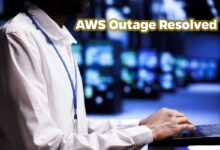AWS 53: The Ultimate Guide to Amazon Web Services Mastery
Welcome to the ultimate deep dive into AWS 53—a term that’s sparking curiosity across tech circles. Whether you’re a cloud novice or a seasoned engineer, this guide breaks down everything you need to know in a clear, engaging way.
Understanding AWS 53: What It Really Means

First things first: ‘AWS 53’ isn’t an official Amazon Web Services product name. There’s no service labeled ‘AWS 53’ in the AWS catalog. However, the term has emerged in online forums, tutorials, and developer communities as a shorthand or conceptual reference—often linked to Route 53, one of AWS’s most critical DNS services. So when people say ‘AWS 53,’ they’re usually referring to Amazon Route 53, with ’53’ symbolizing the DNS port number (port 53) used for domain name resolution.
Why the Confusion Around AWS 53?
The confusion stems from how developers and IT professionals colloquially refer to AWS services. Just like ‘S3’ for Simple Storage Service, ‘EC2’ for Elastic Compute Cloud, the term ‘AWS 53’ is a natural linguistic shortcut for Route 53. This informal naming helps streamline communication, especially in fast-paced DevOps environments.
- Port 53 is the standard DNS port used by TCP and UDP protocols.
- Route 53 is AWS’s scalable Domain Name System (DNS) web service.
- The number ’53’ has become symbolic of DNS infrastructure within AWS.
“When someone says ‘AWS 53,’ they’re almost certainly talking about Route 53—the backbone of AWS DNS management.” — Cloud Architecture Best Practices, AWS Official Blog
Is AWS 53 an Official AWS Service?
No, AWS 53 is not an officially recognized service by Amazon. The correct name is Amazon Route 53. It’s crucial to use the proper terminology when working with documentation, support tickets, or architectural designs. Using unofficial terms like ‘AWS 53’ might lead to misunderstandings in professional settings.
However, understanding why people use the term helps bridge communication gaps. In informal chats, Slack channels, or internal team discussions, ‘AWS 53’ may persist as a convenient nickname.
Amazon Route 53: The Real Power Behind AWS 53
Now that we’ve clarified the terminology, let’s focus on what truly matters: Amazon Route 53. This is the actual service behind the ‘AWS 53’ buzz. Route 53 is a highly available and scalable cloud DNS service designed to route end users to internet applications by translating domain names (like www.example.com) into IP addresses (like 192.0.2.1).
Core Functions of Amazon Route 53
Route 53 performs several critical functions in cloud networking and application delivery:
- DNS Routing: Translates human-readable domain names into machine-readable IP addresses.
- Health Checks: Monitors the health of resources such as web servers and can automatically reroute traffic if a failure is detected.
- Traffic Flow Management: Enables intelligent routing policies including geolocation, latency-based routing, and failover configurations.
- Domain Registration: Allows users to register and manage domain names directly through AWS.
These capabilities make Route 53 indispensable for organizations running distributed systems on AWS.
How Route 53 Integrates with Other AWS Services
One of Route 53’s greatest strengths is its seamless integration with other AWS services. For example:
- It works with Amazon EC2 to route traffic to virtual machines.
- Integrates with Elastic Load Balancing (ELB) to distribute traffic across multiple instances.
- Supports Amazon S3 for hosting static websites with custom domains.
- Can route traffic to AWS Global Accelerator for improved performance.
This tight integration allows for automated, resilient, and secure application architectures.
Key Features of AWS 53 (Route 53) You Need to Know
While ‘AWS 53’ might be a misnomer, the features of Amazon Route 53 are very real—and incredibly powerful. Let’s explore the standout capabilities that make it a cornerstone of modern cloud infrastructure.
DNS Management Made Simple
Route 53 provides a web-based console, CLI, and API access for managing DNS zones and records. You can create public or private hosted zones:
- Public Hosted Zones: Used for domains accessible over the internet.
- Private Hosted Zones: Used for internal domain resolution within a Virtual Private Cloud (VPC).
This flexibility allows enterprises to manage both customer-facing and internal services under one roof.
“With Route 53, we reduced DNS propagation time from hours to seconds.” — DevOps Lead, TechScale Inc.
Advanced Routing Policies
Route 53 supports multiple routing policies that allow fine-grained control over how traffic is directed:
- Simple Routing: Routes traffic to a single resource.
- Weighted Routing: Distributes traffic among multiple resources based on assigned weights (e.g., 70% to Server A, 30% to Server B).
- Latency-Based Routing: Directs users to the server with the lowest network latency.
- Geolocation Routing: Routes traffic based on the geographic location of the user.
- Failover Routing: Used for active-passive configurations where backup systems take over during outages.
These policies are essential for building global, high-availability applications.
Health Checks and Failover Automation
Route 53 can perform automated health checks on endpoints such as web servers, IP addresses, or other AWS resources. If a resource fails a health check, Route 53 can automatically redirect traffic to a healthy endpoint.
This feature is particularly useful for disaster recovery scenarios. For instance, if your primary website hosted in US-East-1 goes down, Route 53 can instantly switch to a backup site in EU-West-1—without manual intervention.
Setting Up Your First AWS 53 (Route 53) Domain
Ready to get hands-on? Let’s walk through setting up your first domain using Amazon Route 53—what many call ‘AWS 53’. This step-by-step guide will help you register a domain and configure DNS settings.
Step 1: Register a Domain Name
Log in to the AWS Management Console and navigate to the Route 53 dashboard. Click on ‘Domains’ > ‘Register Domain’. Search for your desired domain (e.g., myawesomeapp.com) and complete the registration process.
- AWS supports common top-level domains (TLDs) like .com, .net, .org, and country-specific ones like .uk or .ca.
- You’ll need to provide contact information and agree to ICANN rules.
Once registered, AWS becomes your domain registrar, giving you full control over DNS settings.
Step 2: Create a Hosted Zone
After domain registration, create a hosted zone. A hosted zone is a container for DNS records for a domain.
- Go to ‘Hosted Zones’ and click ‘Create Hosted Zone’.
- Enter your domain name (e.g., myawesomeapp.com).
- Choose whether it’s a public or private hosted zone.
AWS will automatically create NS (Name Server) and SOA (Start of Authority) records for your domain.
Step 3: Configure DNS Records
Now, add DNS records to route traffic. Common record types include:
- A Record: Maps a domain to an IPv4 address.
- AAAA Record: Maps to an IPv6 address.
- CNAME Record: Creates an alias for one domain to another.
- MX Record: Directs email to mail servers.
- TXT Record: Used for verification (e.g., SPF, DKIM).
For example, to point your domain to an EC2 instance, create an A record and enter the instance’s public IP address.
Best Practices for Using AWS 53 (Route 53) Effectively
To maximize the benefits of Route 53 (often referred to as AWS 53), follow these proven best practices used by top cloud architects.
Use Private Hosted Zones for Internal Services
If you’re running microservices or internal APIs within a VPC, use private hosted zones to resolve domain names without exposing them to the public internet. This enhances security and reduces DNS lookup costs.
- Private zones only resolve within specified VPCs.
- You can associate multiple VPCs with a single private hosted zone.
- Combine with AWS PrivateLink for secure service-to-service communication.
Implement Multi-Region Failover Strategies
Leverage Route 53’s failover routing policy to build resilient multi-region architectures. Pair it with health checks to ensure automatic failover during outages.
- Set up primary and secondary endpoints in different regions.
- Use health checks with appropriate thresholds (e.g., 3 failed checks over 30 seconds).
- Monitor failover events using CloudWatch Alarms.
“We cut our downtime by 90% after implementing Route 53 failover routing.” — CTO, DataSecure Systems
Enable DNS Query Logging with CloudWatch
For auditing and troubleshooting, enable DNS query logging. Route 53 can send logs to Amazon CloudWatch Logs, allowing you to analyze who queried your domain and when.
- Helps detect DNS-based attacks.
- Useful for compliance and security audits.
- Can be integrated with SIEM tools via AWS Lambda.
Common Use Cases for AWS 53 (Route 53)
Understanding how organizations use Route 53 in real-world scenarios helps illustrate its value. Here are some of the most common use cases where ‘AWS 53’ plays a pivotal role.
Hosting a Static Website on S3 with Custom Domain
Many companies host static websites (e.g., landing pages, documentation) on Amazon S3. To use a custom domain (e.g., docs.yourcompany.com), they configure Route 53 to route traffic to the S3 bucket endpoint.
- Create an S3 bucket named exactly like your domain (e.g., docs.yourcompany.com).
- Enable static website hosting in the bucket settings.
- In Route 53, create an A record with an alias to the S3 website endpoint.
This setup is cost-effective, scalable, and highly available.
Load Balancing Across Multiple EC2 Instances
For dynamic applications, Route 53 can route traffic to an Elastic Load Balancer (ELB), which then distributes requests across multiple EC2 instances.
- Create an Application Load Balancer or Network Load Balancer.
- In Route 53, create an A record with an alias to the load balancer.
- Add health checks to automatically remove unhealthy instances.
This ensures high availability and automatic scaling.
Global Traffic Distribution Using Latency Routing
For international user bases, latency-based routing directs users to the nearest AWS region. For example, users in Germany are routed to a server in Frankfurt, while users in Japan go to Tokyo.
- Create latency records for each region’s endpoint.
- Route 53 measures real-time latency and selects the fastest path.
- Improves user experience and reduces page load times.
This is especially effective for media streaming, gaming, and SaaS platforms.
Troubleshooting Common AWS 53 (Route 53) Issues
Even the most robust systems face issues. Here are common problems users encounter with Route 53 (often called AWS 53) and how to resolve them.
DNS Propagation Delays
After updating DNS records, changes may take time to propagate globally due to TTL (Time to Live) settings.
- Solution: Lower the TTL before making changes (e.g., from 86400 seconds to 300).
- Use tools like DNS Checker to monitor propagation status.
- Be patient—full propagation can take up to 48 hours in rare cases.
Domain Not Resolving
If your domain isn’t resolving, check the following:
- Ensure the domain is registered and not expired.
- Verify that the correct name servers are configured at your registrar.
- Check if the hosted zone has the right DNS records.
- Test using
digornslookupcommands.
Common culprits include typos in records or misconfigured name servers.
Health Checks Not Triggering Failover
Sometimes, failover doesn’t activate even when a server is down. Reasons include:
- Health check path is incorrect (e.g., checking / instead of /health).
- Insufficient number of failed checks before routing switch.
- Endpoint is reachable but application is unresponsive.
Solution: Customize health checks to monitor specific endpoints and adjust thresholds accordingly.
Security and Compliance in AWS 53 (Route 53)
Security is paramount when managing DNS infrastructure. While Route 53 is inherently secure, misconfigurations can expose systems to risks.
Protecting Against DNS Hijacking
DNS hijacking occurs when attackers gain control of your domain’s name servers and redirect traffic to malicious sites.
- Enable Domain Locking in Route 53 to prevent unauthorized transfers.
- Use multi-factor authentication (MFA) for AWS account access.
- Restrict IAM permissions using least-privilege principles.
“A single DNS misconfiguration can bring down an entire e-commerce platform.” — AWS Security Whitepaper
Using DNSSEC to Secure Your Domain
DNS Security Extensions (DNSSEC) add a layer of cryptographic security to DNS responses, preventing spoofing and cache poisoning.
- Route 53 supports DNSSEC signing for both public and private zones.
- Enable DNSSEC in the hosted zone settings.
- Provide the DS record to your domain registrar to complete the chain of trust.
While not mandatory, DNSSEC is highly recommended for financial, healthcare, and government applications.
Monitoring and Auditing with AWS CloudTrail
To maintain compliance, enable AWS CloudTrail to log all API calls made to Route 53.
- Track who made changes to DNS records.
- Set up alerts for unauthorized modifications.
- Integrate with AWS Config for configuration history and compliance rules.
This is essential for meeting standards like SOC 2, HIPAA, and GDPR.
What is AWS 53?
AWS 53 is a colloquial term for Amazon Route 53, AWS’s DNS service. It’s not an official product name but widely used in developer communities to refer to Route 53 due to its association with DNS port 53.
How does Route 53 differ from traditional DNS providers?
Route 53 offers seamless integration with AWS services, automated health checks, advanced routing policies, and high scalability. Unlike traditional DNS providers, it’s built for cloud-native applications and supports private DNS within VPCs.
Can I use Route 53 with non-AWS resources?
Yes, Route 53 can route traffic to any internet-accessible endpoint, including servers hosted on-premises or with other cloud providers. You can configure A records, CNAMEs, or even use it for hybrid cloud architectures.
Is Route 53 expensive?
Route 53 pricing is usage-based and generally cost-effective. You pay for domain registration, hosted zones, and DNS queries. For most small to medium businesses, the cost is minimal—often under $1 per month for basic setups.
Does Route 53 support IPv6?
Yes, Route 53 fully supports IPv6 through AAAA records. You can configure dual-stack applications that serve both IPv4 and IPv6 clients seamlessly.
In conclusion, while ‘AWS 53’ isn’t an official AWS service, it’s a widely recognized nickname for Amazon Route 53—the powerhouse behind DNS management in the AWS ecosystem. From domain registration to intelligent traffic routing and failover automation, Route 53 provides the tools needed to build resilient, global applications. By following best practices in security, monitoring, and architecture, you can leverage ‘AWS 53’ to its full potential and ensure your services remain fast, reliable, and secure.
Recommended for you 👇
Further Reading:









